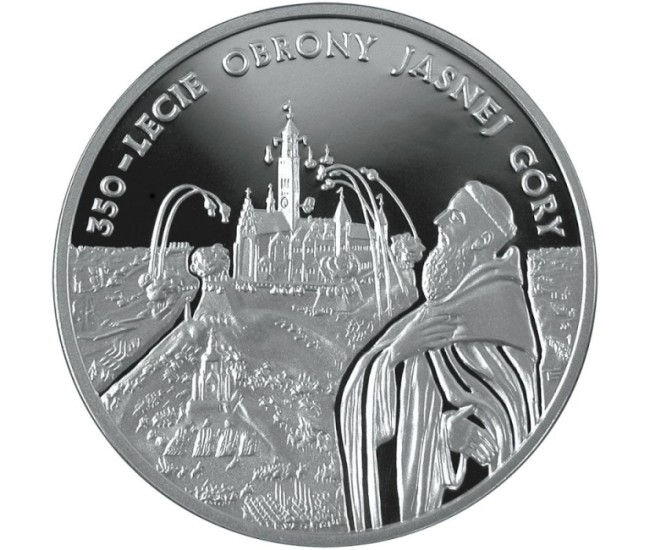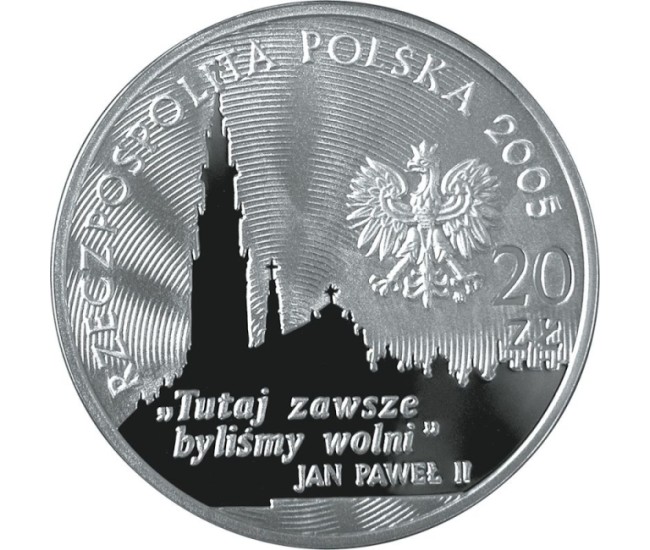collector coin
Europe / Poland / since 1995
20 zł 350 years of the Jasna Gora Monastery Defence
Poland 2005 28,28 g Ag 925
Catalogue number
LR #2485
Denomination
20 zł
Country
Poland
Age
since 1995
Metal
Ag
Fineness (purity)
925
Weight
28,28 g
Diameter
38,61 mm
Quality
Proof
Year of issue
2005
Certificate
No
Box
No
Mintage
69 000 pcs.
35 $
Catalog price
0.0
0 vote
0 people have this on favourite
0 people have this on their collection
 Oceń: wygląd, temat, nakład
Oceń: wygląd, temat, nakład
The obverse of the coin presents a fragment of the Monastery of the Pauline Fathers on Jasna Góra in Częstochowa. On the reverse side there is an image of Father Augustyn Kordecki from a painting from the late 17th century. On the seventh of November 1665 the Prior of the Jasna Góra Monastery, Augustyn Kordecki, recognised the power of the Swedish King Charles Gustav. Until that time, the Swedes had been winning easily. In return for his subordination, Kordecki received a letter of iron from the Swedes guaranteeing the safety of the fortress. Despite this, the Swedes were not trusted, and Kordecki made deals with them, while seeking help from King Jan Kazimierz. Moreover, the most valuable objects and the miraculous icon were taken away from the monastery in advance. The mistrust of the Poles turned out to be justified, as the Swedes demanded access to the monastery for their garrison. This request was, of course, refused by Kordecki, after which the Swedes made an attempt to conquer the monastery on 8 November. The monks refused to surrender. The defence of Jasna Góra was, above all, a symbolic triumph of the Church in its dimension. Since the invaders were Lutherans, since the defence of Jasna Góra, Polishness began to be associated with Catholicism. The victory at Jasna Góra was also important in the fight against the Swedes. In December 1665 the troops of Jan Kazimierz finally went on the offensive, during which they took Nowy Sacz back. On the news of the success at Jasna Góra, the Tišoviet confederation was formed on 29 December. At the end of 1655, Jan Kazimierz set off for Lvov, where on April 1, 1656 he took his vows in Lvov, electing Our Lady of Czestochowa as the patron saint and Queen of Poland.



 english
english



